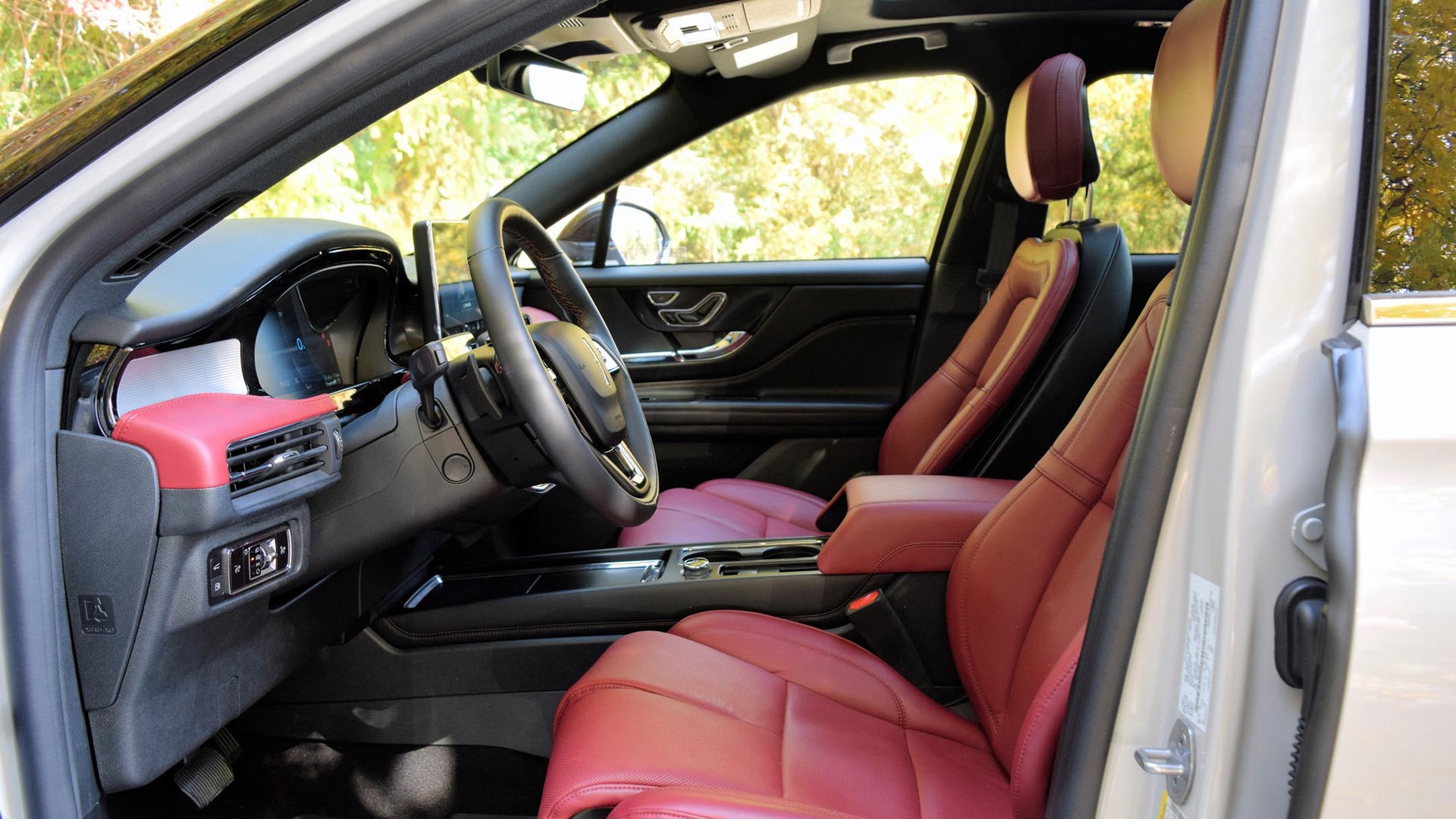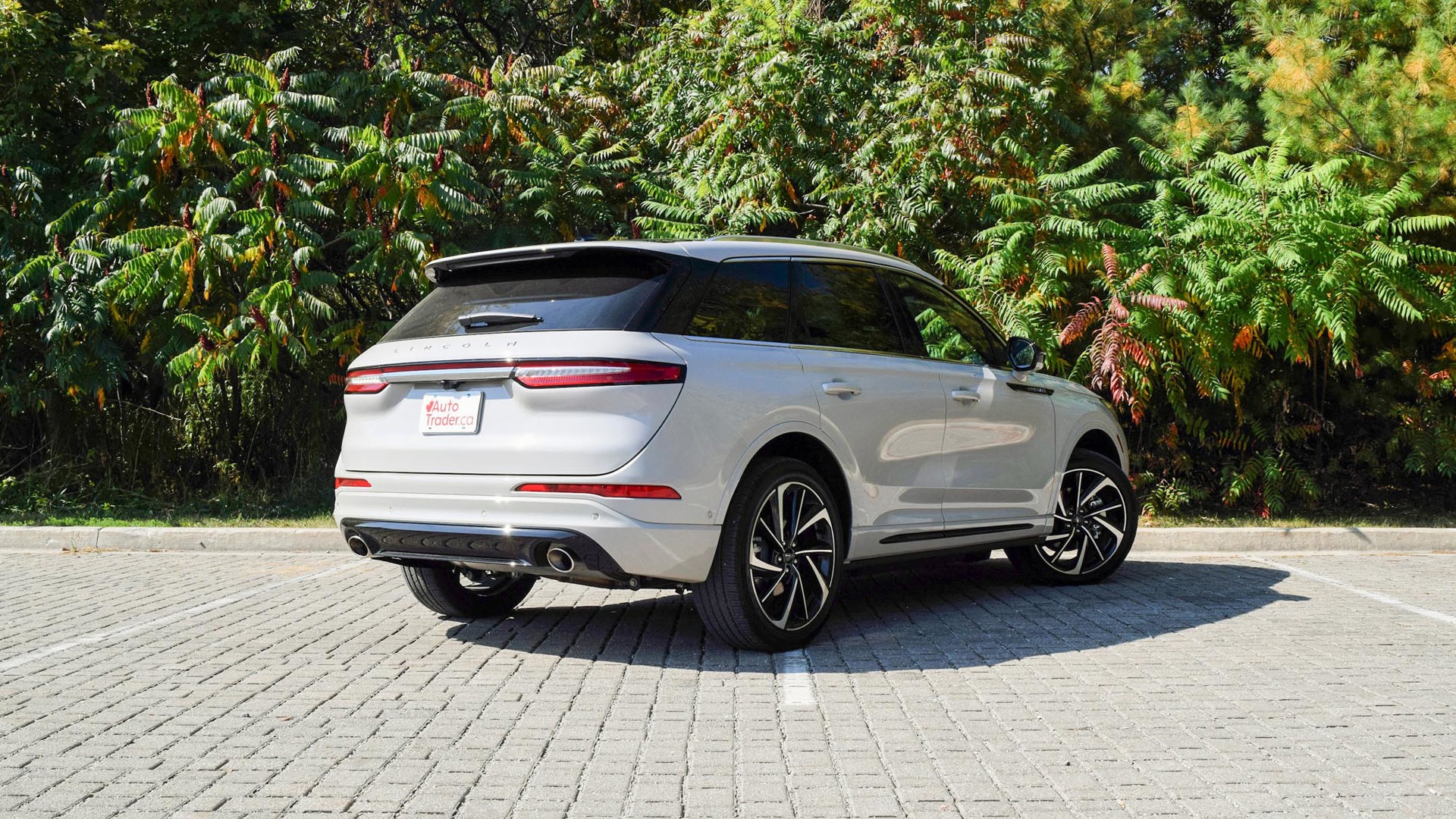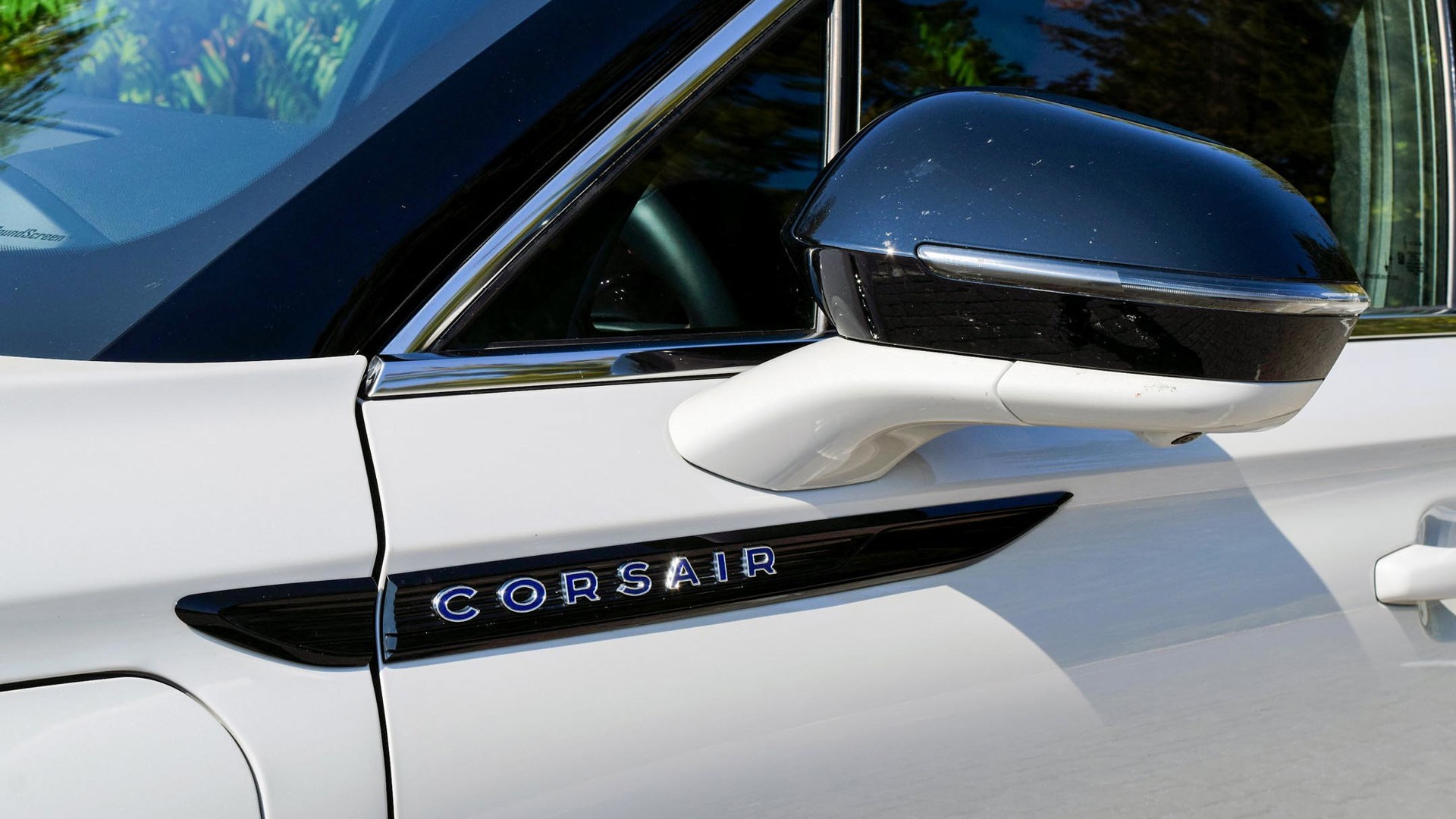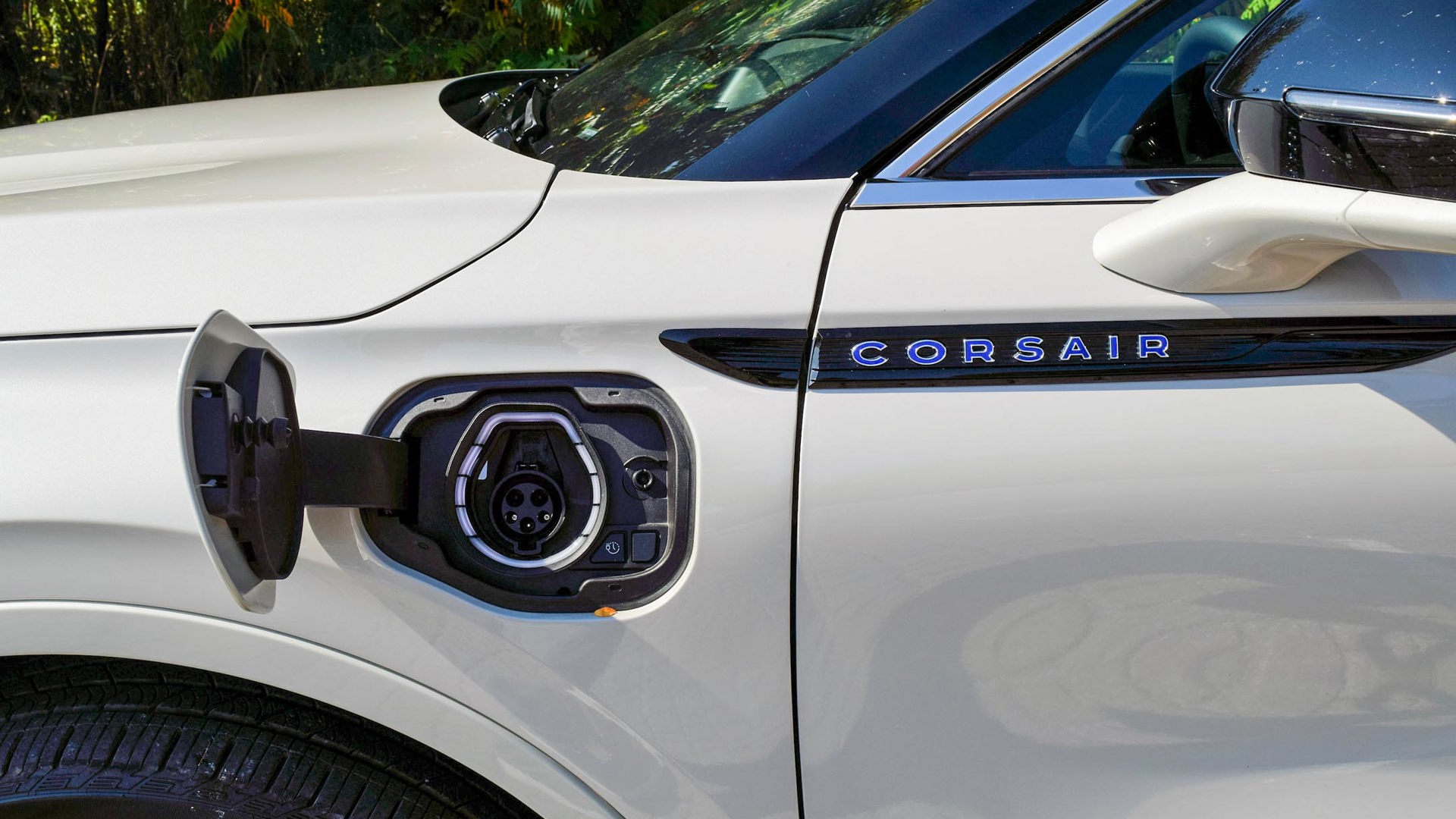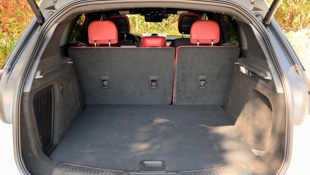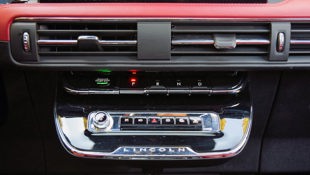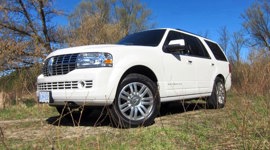 AutoTrader SCORE
AutoTrader SCORE
-
STYLING7/10
-
Safety7/10
-
PRACTICALITY8/10
-
USER-FRIENDLINESS7/10
-
FEATURES8/10
-
POWER7/10
-
COMFORT8/10
-
DRIVING FEEL7/10
-
FUEL ECONOMY6/10
-
VALUE6/10
Commonly, critics have chided Lincoln’s vehicles as little more than fancy Fords.
In fairness, there used to be some truth to the criticism; but these days the brand provides more distinction from its mainstream siblings through the use of electrification. A test of the 2024 Lincoln Corsair Grand Touring and its plug-in hybrid (PHEV) powertrain uncovered traits the Ford Escape with the same gas-electric setup is lacking, including personality that broadens its appeal.
Styling: 7/10
To avoid looking like any anonymous crossover, the Corsair features blacked-out pillars that provide the effect of a floating roof. It’s a trick that helps reduce the visual height of the vehicle. The overall flow of the design certainly makes the Corsair more cohesive looking than the Cadillac XT4, but it doesn’t stand out next to the Lexus NX, or even the Acura RDX. There also isn’t much that differentiates the Corsair PHEV from its gas-powered siblings.
Coarse plastics are mostly absent inside, and the version tested here has a gorgeous black and red interior design. The push-button gear selector takes some getting used to, and a few controls – including those on the steering wheel – feel a bit on the flimsy side. The stitching and accents look worthy of the premium image associated with the Lincoln nameplate, however.
Safety: 7.5/10
A suite of advanced safety and driver-assist features is standard in this range-topping version of the Corsair, and it includes blind-spot monitoring with rear cross-traffic alert, evasive steering assist, adaptive cruise control, forward collision warning, parking sensors, and a self-parking system.
This tester also included hands-free functionality for the adaptive cruise that can be used on certain stretches of divided highways in Canada and the United States. Notably, the system isn’t offered in the Corsair’s mainstream cousin, the Ford Escape.
Features: 8/10
Helping to dispel the notion that this Lincoln is nothing more than a dolled up Ford is the long lists of fancy features in this tester. While there are expected goodies like heated seats front and rear, ventilated front seats, a heated steering wheel, and a wireless charging pad, the chairs up front are also 24-way power-adjustable and include massage functionality. There’s also a 14-speaker stereo, and warning chimes as recorded by the Detroit Symphony Orchestra. While perhaps gimmicky, these elements help the Corsair feel that much warmer and more interesting than a mainstream model – or even its premium rivals.
User-Friendliness: 7/10
It’s hard to ignore just how many buttons there are on the steering wheel. Adding to the steep learning curve is the way they light up or darken depending on context. It takes some getting used to, but once figured out you’ll be able to navigate your way through the sharp-looking 12.3-inch instrument display and customize the head-up display to your liking.
The 13.2-inch touchscreen infotainment system is nice, but the interface has a few quirks – like needing an extra tap on a map or smartphone projection apps to fill the entire screen. There’s wireless Android Auto and Apple CarPlay support here, and even built-in Amazon Alexa.
HVAC controls are integrated into the touchscreen, but they use a static location that makes them easy to find. A few tactile controls are found throughout the cabin, including a volume knob and drive-mode selector.
Practicality: 8/10
An interesting wrinkle with the Corsair is the clamshell-style tailgate. Once it’s popped up, there’s 941 L of cargo room behind the rear seats, which expands to 1,593 L when those are folded. A 40/20/40 split-folding rear bench would also be more useful than the current 60/40 setup.
The interior space is solid, and the Corsair is a family-friendly crossover. A stroller can easily fit in the back, and a rear-facing car seat can be installed behind the front passenger without a significant compromise.
Comfort: 8/10
The cabin is spacious, while the seats strike a good balance between soft and supportive, and those with more time on their hands can take advantage of the 24-way power-adjustable front seats to find the perfect position. Additionally, noise levels inside are well managed thanks to active noise cancellation.
Power: 7/10
Where the 2024 Corsair PHEV really separates from the Escape with the same powertrain is with both power and performance. Yes, they both use the same 2.5L four-cylinder engine and an electric motor, but the Lincoln’s output measures 266 hp compared to the Escape’s 210. This crossover also features all-wheel drive, which isn’t available on the Escape PHEV.
At times the Corsair’s powertrain seemed eager to fire up the gas motor even when the battery was charged. Other times, when in the Preserve EV mode that’s supposed to save that emissions-free range for later, it would continue to cruise on the battery power at low speeds, slowly sipping away my banked electrons.
Driving Feel: 7/10
The adaptive suspension system soaks up bumps and road imperfections, even while riding on large 20-inch wheels. Steering and handling are fine, as the Corsair feels a touch less agile than it should, trading lateral responsiveness for a cushy ride.
Fuel Economy: 6/10
The Corsair PHEV has 45 km of all-electric range, which is quite a bit less than the front-wheel-drive Escape PHEV (60 km). Meanwhile, the Nexus NX 450h+ PHEV has 61 km of range, according to Natural Resources Canada (NRCan). While it’s rated for 3.0 Le/100 km with a charged battery, consumption hits 7.1 L/100 km when operating as a conventional hybrid.
It takes about 11 hours to recharge the battery using a standard household outlet, but a Level 2 charger cuts that down to less than four hours.
Value: 6/10
The ticket of entry to the Corsair Grand Touring PHEV is $59,990, which is about $6,000 more than the turbocharged Reserve model. It’s also an almost identical starting price to the plug-in Lexus NX, which has more range. This well-equipped tester and its extras – $950 paint, $13,000 upgrade package, 20-inch wheels, and 24-way seats – touches $80,000 before tax.
The Verdict
It’s hard to recommend a small SUV, premium or otherwise, that rings in at $80,000 before tax, but there are parts of the 2024 Lincoln Corsair PHEV worth praising. The fancy goodies, like the massaging seats, the symphonic chimes, and the hands-free driving system are all highlights, along with the interior appointments. However, the electric range and battery management system are enough to hold it back.
| Engine Displacement | 2.5L |
|---|---|
| Engine Cylinders | 2.5L |
| Peak Horsepower | 266 hp |
| Peak Torque | N/A |
| Fuel Economy | 6.9 / 7.3 / 7.1 L/100 km cty/hwy/cmb; 3.0 Le/100 km, 45 km est. range (EV mode) |
| Cargo Space | 941 / 1,593 L seats down |
| Model Tested | 2024 Lincoln Corsair Grand Touring AWD |
| Base Price | $59,990 |
| A/C Tax | $100 |
| Destination Fee | $2,395 |
| Price as Tested | $2,395 $80,335 |
|
Optional Equipment
$17,850 – Equipment Group 302A, $13,000; 24-way seats, $1,900; 20-inch wheels, $1,750; Ceramic Pearl paint, $950; All-weather floor liners w/mats, $250
|
|




